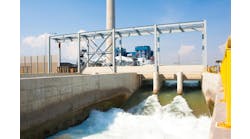As well as being a showpiece for everything Chinese, the Beijing Olympics has also been an opportunity to promote the very best in chemical engineering ranging from personal protection to food safety.
For example, many of the Beijing police are wearing bullet-resistant vests and helmets made from Dyneema unidirectional (UD) fiber supplied by DSM, Urmond, the Netherlands.
Dyneema, marketed by DSM as “the world’s strongest fiber,” is a polyethylene fiber produced by a patented gel spinning process. It’s up to 15 times stronger than steel and, weight-for-weight, is 40% stronger than competing aramid fibers.
The 3,000 vest and helmets were designed and manufactured by Zhong Tian Feng Protection Products Technology Company (ZTF), Beijing, after it won a contract from the Beijing Bureau of Public Security.
“The exceptional properties of Dyneema UD were a critical factor in our successful bid to provide them with bullet-resistant vests,” says Yang Zhi Dong, ZTF general manager.
Meanwhile, the $2.2 billion of new stadiums built over the last five years have provided numerous opportunities for the use of novel durable materials.
One such example is Makrolon, the high-tech polycarbonate from Bayer Material Science, Leverkusen, Germany. Like the athletes themselves, it had to meet exceptional criteria to qualify for Beijing. The combination of excellent light transmission, flexural strength, low weight and durability ensured that more than 36,000 square meters of the material has been used in the Olympic stadiums at Shenyang and Tianjin and at the sailing center in Quingdao.
Ease of assembly was another critical issue, so to cope with the strict construction deadlines set by the Chinese, Bayer had to develop a special form of Makrolon in a very short time. The resulting sheets are 25 millimeters thick, 1.5 meter wide and can bear loads of more than three kilonewtons per square meter — remaining safe and secure even in heavy snowfalls and strong winds.
The Shenyang stadium alone used 21,530 square meters of Makrolon for its roof and facade. Another 13,000 square meters forms a transparent inner ring in the Tianjin Olympic stadium. Because of its 85% light transmission level through the 6-mm sheets, it was possible to build the stands close to the edge of the soccer playing field without impairing grass growth.
Dupont, Wilmington, Del., has played a critical role in both the sustainable construction of the Beichen National Convention Center — the hub of the international broadcast media during the Olympics — and food safety.
DuPont innovations are helping to protect the Center’s envelope and improve indoor comfort, as well as significantly save on energy costs by reducing heat transfer. According to the company, its Tyvek, ThermaWrap and Tyvek SD2 Vapor Control Layer offer superior strength and durability — a further benefit in the drive toward reducing the carbon footprint of buildings.
DuPont is very excited to see its products being used in the project not only for energy efficiency benefits to the remarkable building, but more importantly to contribute to the city’s and China’s sustainability efforts, according to Douglas Muzyka, president of DuPont Greater China.
DuPont also supplied its BAX detection technology to the Beijing Municipal Center for Food Safety Monitoring (BFSM). BAX offers advanced, DNA-based detection of microbes in food and has already been adopted by various food inspection services around the world.
Dow Water Solutions, Edina, Minn., installed reverse osmosis membranes at three wastewater reclamation and reuse facilities around Beijing to help treat 45,000 cubic meters of water per day.
“Dow implemented a similar water reclamation project for the Sydney Olympic Games, and we are excited to bring our expertise and proven membrane technology to another world showcase event,” explains Niann-Tsyr Yuen, Asia Pacific FILMTEC membranes product marketing manager, Dow Water Solutions.
In the run up to the Olympics, much was made of traffic pollution in Beijing. Without BASF’s involvement, the problem might have been very much worse. For years, the company has been working with the State Environmental Protection Administration (SEPA) of China and late last year the organizations extended their bilateral strategic cooperation on clean fuels with the inauguration of the country’s first independent diesel engine testing laboratory. Jointly sponsored by BASF and the Chinese Research Academy of Environmental Sciences (CRAES), the project focuses on advanced diesel technologies and R&D expertise, both in the run up into the Olympics and beyond as China strives to boost its eco-efficiency and sustainable development.
